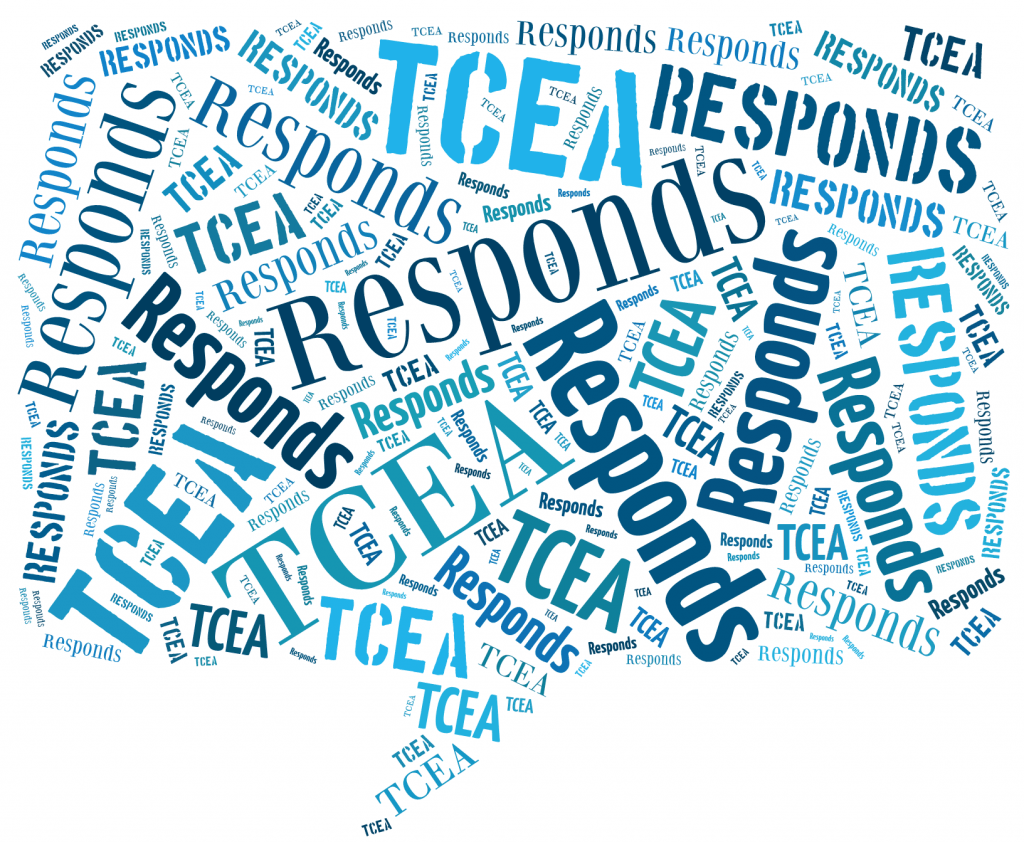Dear TCEA Responds:
How do I manage or find my addressbook in Google? I upgraded from my old phone, but somehow, I now have a lot of duplicates in my smartphone. I have two or more of everything. Finding the duplicates takes forever on my phone. Is there a way to do this online?
-Monica
Dear Monica:
Thank you for your email. Working with your smartphone contacts can be a bit daunting. I know people who hate upgrading their phones because they worry their contacts will go away. If you are using an Android phone, or even an iPhone, many of your contacts are safe. That’s because Google saves them to the cloud for you.
Did You Know?
Sign up for one of our Google Certified Educator certifications. You’ll learn about more than Google Meet, as well as earn 12 CPE hours per course. Use these courses to get Google Educator certified. Find out more online.
Let’s review a few ways you can solve your duplicate problem. You didn’t say which phone you had, so I’ll focus on Android.
Dealing with Duplicates in Google Contacts
Dealing with duplicates on your Android phone can be a pain. If your phone is backing itself up to Google, then switching to a new phone may have resulted in lots of duplicate entries.
Many people are unaware that they can access their phone contacts list online. You can get to it via the Google Contacts website. Once you are there, you can take advantage of its “Merge and fix” option, as seen below:
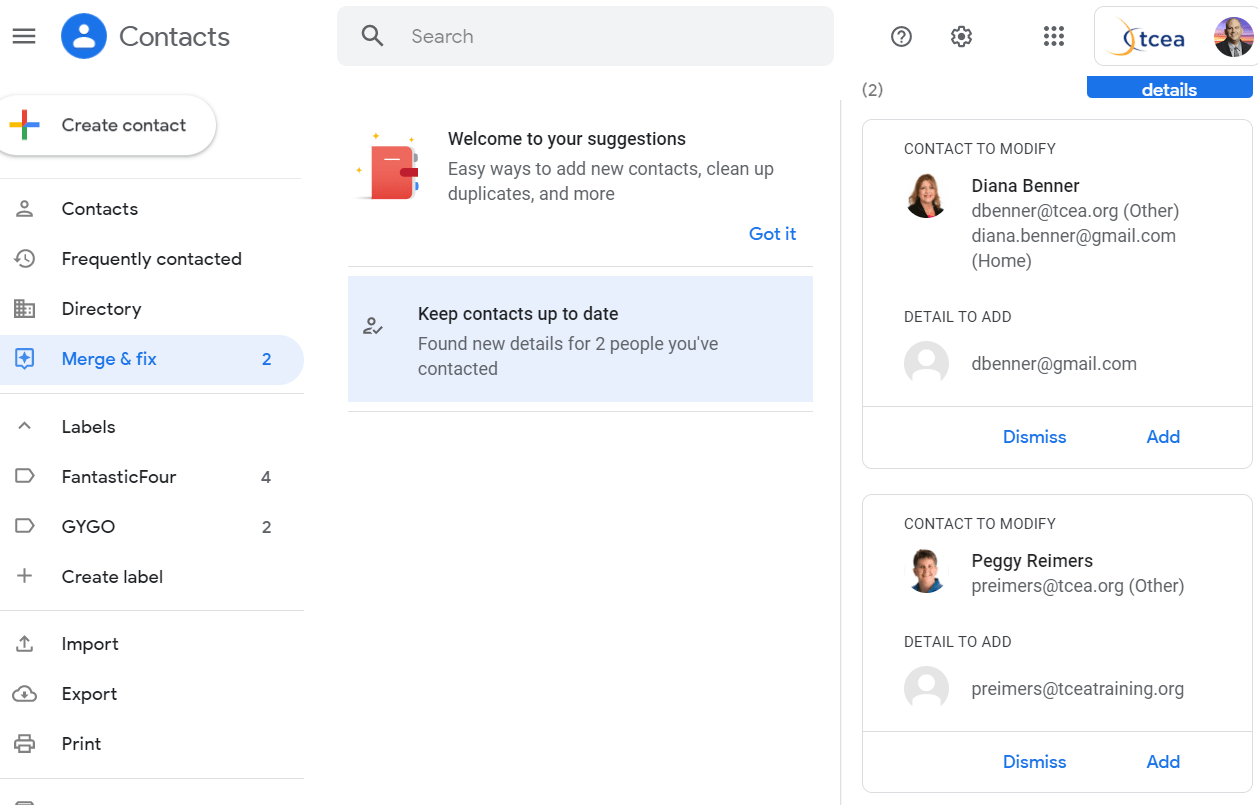
As you can see in the screenshot, this is one of the easiest way to merge and fix contacts. You also have more options available through Google Contacts. Let’s take a look at them.
Organizing Your Contacts into Label Groups
Did you know you can organize your contacts into Groups so that whatever changes you make in Google Contacts will end up in your smartphone? You can do this through the use of labels. Any labels you create and assign to your contacts appear as Groups on your phone. That may make a specific group of people easier.
You can’t delete the contacts in your Directory in Google Contacts, but you can organize them into groups that will appear on your smartphone. The way you do that is to assign them a label. While it’s easy to select contacts in your Directory list, then assign them a label, let’s take it a step further. Let’s export your contacts. This could come in handy if you want to keep a list of people in your work contact lists. Some people find it easier to work long lists in a full-screen editor or database tool.
Exporting is another way of saying “Save these contacts to my computer as a CSV file.” CSV is a comma-delimited text file that is often used for database imports/exports.
Note: To protect the innocence of the privacy of people in my contacts, I have pixelized names and emails. This makes them unreadable.
Before you start the export process, you will need to take some steps. Let’s review them:
Step 1 – Create a Label
This is an important step. The reason why is that Google Contacts does not allow you to export your Contacts Directory. First, you have to assign them a label you have created, then export that label.
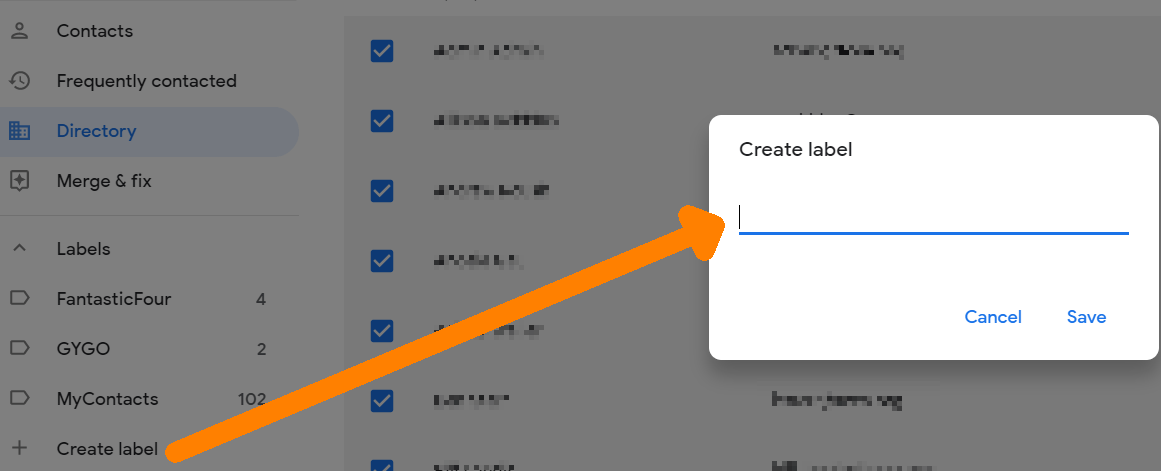
For example, I have created a “MyContacts” label in Google Contacts. You can title this label whatever you want (e.g. “Keepers”). Once I have that, I can go to label specific contacts. These are the ones I want to keep.
My last step will be to use the EXPORT option and export only the MyContacts label. This is great because I can choose to add only the correct entries in my contacts directory.
Step 2 – Label Directory Entries with “MyContacts” Label
Now that you have your “MyContacts” label created, you can go through your directory. You can multi-select the ones you want to keep as shown in the screenshot below.
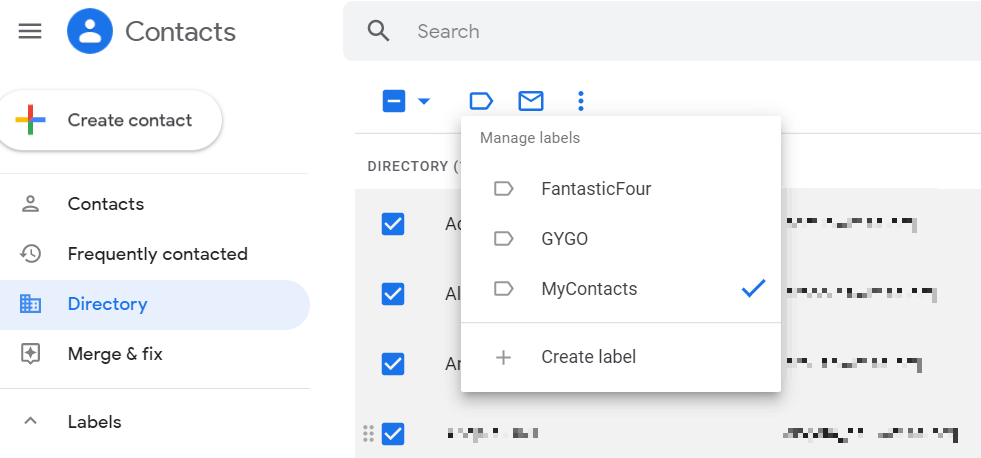
Once you have added all the contacts you want to keep to the “MyContacts” label, you’re ready to move on.
Step 3 – Export the Entries Labelled “MyContacts”
In this step, you are going to export the entries you labeled in Step 2 as “MyContacts.” As you can see from the image below, you can export the contacts with the “MyContacts” label.
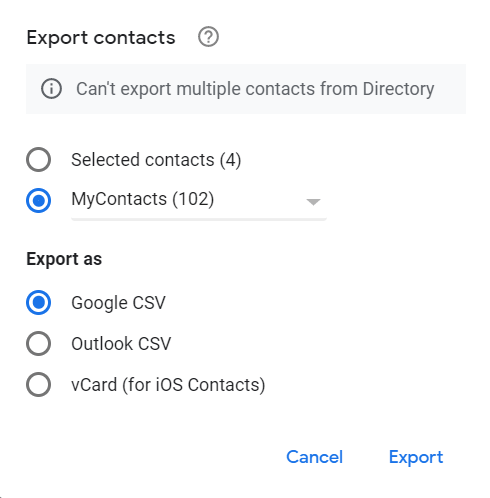
Note that you have three options. While Google CSV is the best option if you’re trying to clean up your contacts, there are others. You could use Outlook CSV if you want to move to Outlook email client, or vCard for iOS.
If you look at the file you have exported in MS Excel, LibreOffice, or Google Sheets, you will see the following:
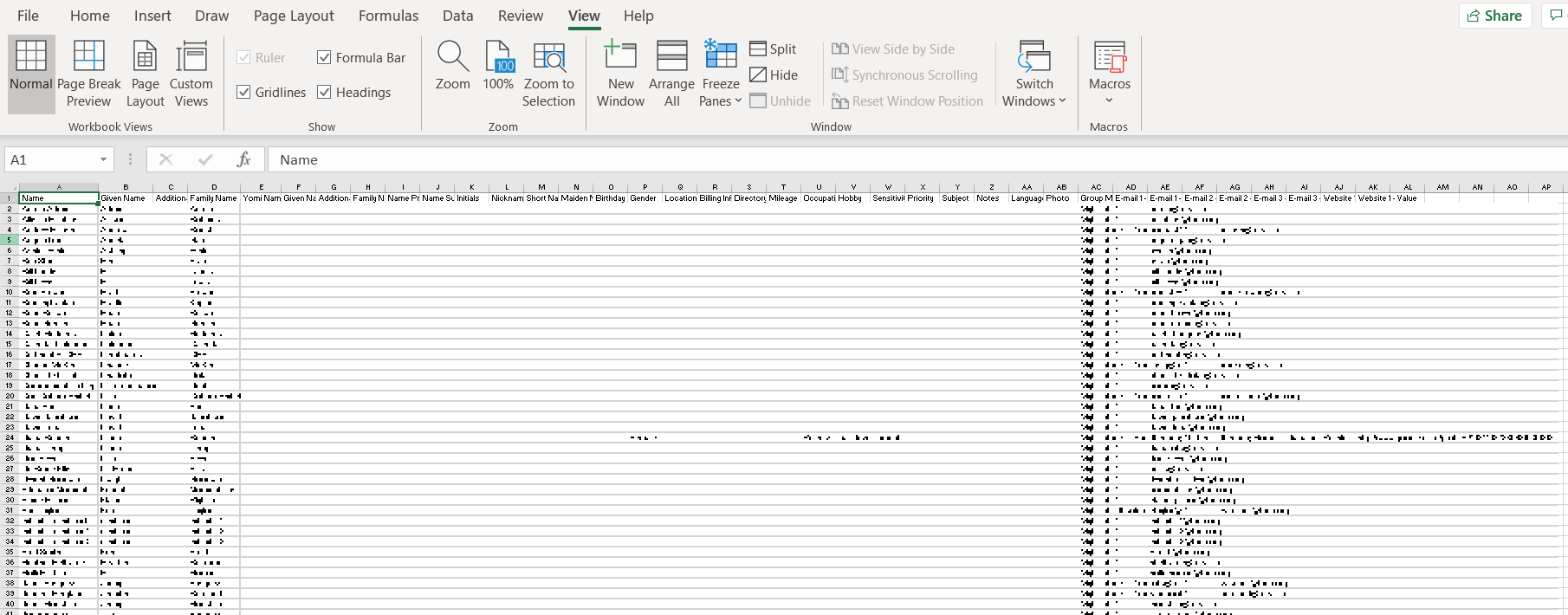
Once you have verified you have an export file, close out of it without making changes.
At this point, you can choose to completely wipe out your Google Contacts Directory. That is, you can delete or remove any contacts you have labeled. Google prevents you from removing contacts from the Directory itself in order to safeguard your data.
Ready to import your contacts from a particular group to a new label? Let’s take a quick look at that.
Step 4 – Import Contacts Exported Before
Since you have that exported contacts file on your computer, you can choose to import it. In the screenshot below, you can see how we can import the contacts into a new label, MyPeeps.
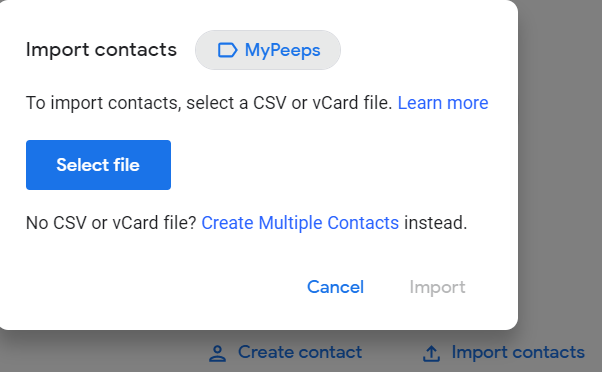
As it imports and when it finishes, you will seen screens like this:
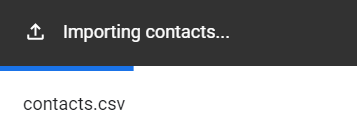
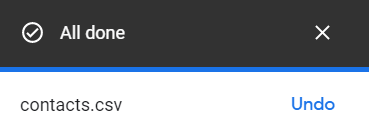
And that’s pretty much the process. If you look at your phone, you will see that you have Groups that reflect your labels in Google Contacts.
There is a lot you can do via the Google Contacts web interface. Take some time to explore it and organize your phone groups using it. Use it to clean up your duplicates with Merge & Fix.

